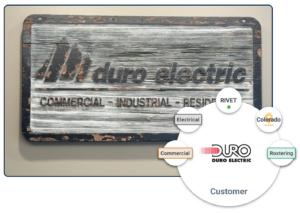GUIDE
A Real-World Case Study: A Failed Marriage
When legacy meets modernity
Let me tell you another tale – one of a large legacy contractor grappling with the adoption of a new ERP system. This is a story of frustrations, misunderstandings and a surprising recommendation that made everyone’s jaw hit the floor.
The contractor signed with one of the major construction software companies in the United States, but the implementation was going haywire.
The process seemed broken and the software company appeared oblivious to the contractor’s needs. Of course, some blame was on the contractor’s end. But, they felt deceived by the sales and implementation teams’ empty promises.
So, who did they call to sort out this mess? Me. I was recommended to them by other contractors and the software company as a sort of “marriage counselor” for this turbulent union. Here’s the shocker: I suggested they split up. At least for a year. The room filled with uproar. “We’ve already invested so much time and money!” the contractor exclaimed. I calmly explained that continuing down this path would bleed more resources without yielding better results. It was a lose-lose situation.
The failure was not a matter of incompetence or maliciousness. The software was top notch and the contractor, boasting 75 years in business and hundreds of millions in annual project revenue, was no pushover. The crux of the matter was they simply weren’t ready to align.
Here’s what went wrong:
1. Culture
The regional office, not the corporate office, was made the guinea pig for the ERP system. Though this seemed a practical strategy, it revealed a lack of commitment to technology on the part of the entire company. Testing technology on a small scale is wise, but excluding other divisions and offices from the process was a recipe for failure. Divisional and corporate leadership need to be continuous stakeholders throughout the adoption of a tool. It is tempting to duck those status calls; but if you skip them you risk working in the business, versus working on the business.
2. Perception
It was clear that the corporate level viewed the ERP system as a mere tool, not a vital investment. Key stakeholders had pushed this onto some mid-level management, who were missing perspectives of other divisions and offices. Not to mention, these managers lacked the clout, responsibility and position to change 75 years of processes. This software was looked at by the C-suite like something to simply streamline the work and save a few hours. The same as buying a utility bed truck or smart conduit bender. When the ERP system fails at a division or corporate level, it would be seen either as this regional office or the software’s fault. In reality, neither should have been in this position from the start.
3. Process
The contractor had an impressive process for numbering, tracking and invoicing their jobs. However, it was a relic from the 1950s, designed for paper and Excel – not modern ERP systems. Expecting these processes and tools to change in 20 days, or even 20 weeks, was unrealistic. Compared to the 75 years spent refining their current methods, the new processes evolving alongside a new technology in a matter of weeks was a tall order. Especially when there wasn’t a proportionate willingness to change.
I left them with clear guidance: Get your key players in one room and create a game plan. Embrace the fact that systems need updating to remain competitive and help the next generation of leadership continue to grow. But, I also reminded them, it took 75 years to build their current system – it doesn’t need to change overnight.
It’s a lesson in alignment, adaptability and the importance of perspective. Sometimes, realizing that two great entities aren’t ready for each other is the first step toward success. Change takes time, especially when you’re bridging the gap between legacy and modernity. Sometimes, the path forward requires a step back to evaluate and prepare. That’s not failure, it’s wisdom.
Conclusion
I hope my perspective on software adoption resonates with you. Whether you’re embarking on new technological paths or reflecting on your current systems, my goal with this narrative is to provide valuable insight.
Embracing software and data collection is crucial for succession planning. That’s especially true within the evolving construction industry. Particularly so when passing the baton to next-generation leadership and a diverse, innovative new workforce. We must prepare the next line of leadership with the tools and information they need for a smoother transition and continued success in a brave new world. Using technology to gather actionable insights enables data-driven decision making, an understanding of operational efficiencies, customer relationships and financial health. It democratizes access to critical business knowledge that may have previously only resided with a select few and only gained over decades of experience.
For successful tech adoption, you must establish an ideology with these points at the heart of it: culture, perception and process. Recognize that technology is just a doorway for evolving workflows that lead to better business practices. Like CAD has done for BIM, for example.Remember, technology is just a foundation supporting and connecting people with process.
That fax machine might be a relic of the past, but the lessons it taught are timeless. Let’s keep learning, growing and building a future where the construction industry is always moving forward.

Toby Mitchell is the dynamic force behind Classic Electric & Consulting. He’s also the Construction Technology Committee Chair for ELECTRI International. With over 25 years of experience in the construction industry, Toby is no stranger to the intricate dance of construction operations. Recognized for his deep understanding of both hands-on construction and the integration of digital tools, Toby frequently advocates for the seamless fusion of communication and technology to achieve optimal project outcomes.
Get Started Today
Construction labor challenges can be greatly reduced with the right software


